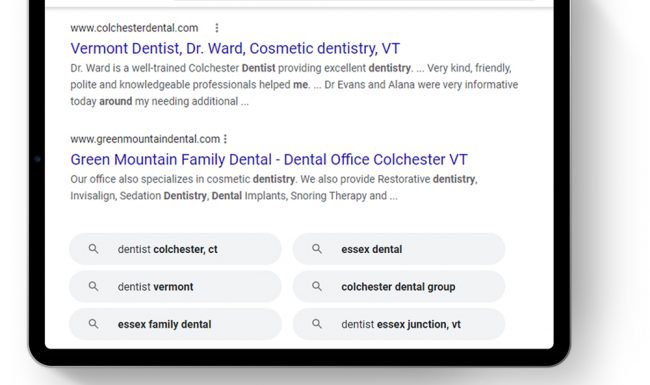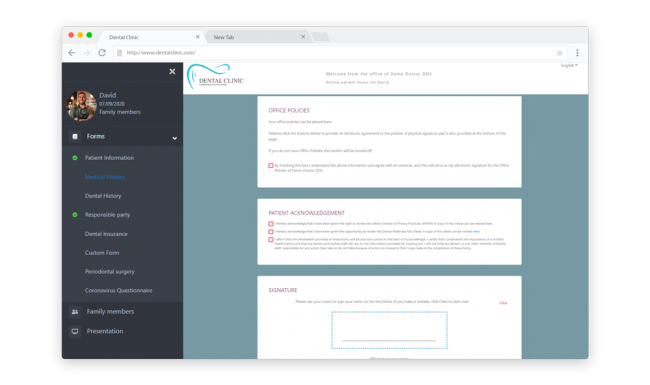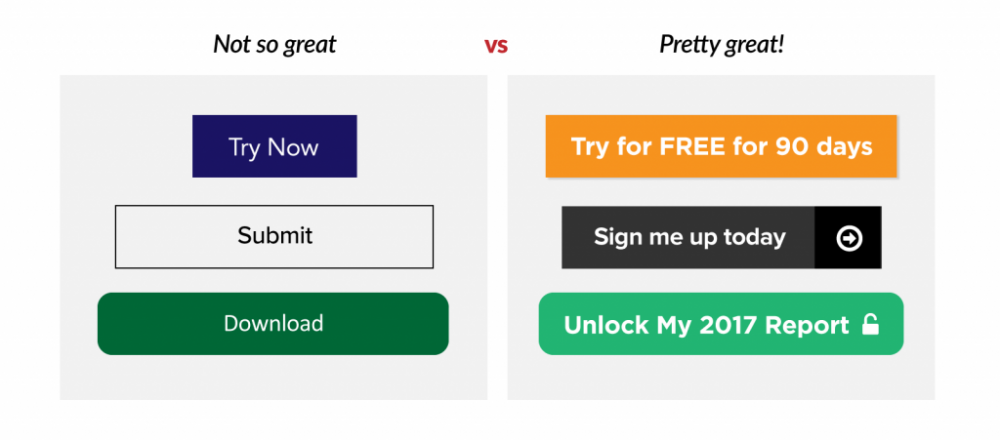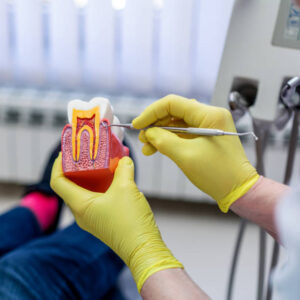More dental practices now understand the importance of dental SEO in dental website design to rank higher in search engines results pages, attract more patients, and increase practice revenue in a competitive dental industry.
- According to our latest State of Dental Marketing report (free to download here), 68% of surveyed practices are planning more dental SEO efforts in 2023 or maintaining the same level of SEO for their best dental websites.
- This upward trend reflects what Dental Economics recommended to practices in June 2022: “If you want your practice to stay relevant in your community, you need to get serious about local SEO.”
Getting serious about dental SEO largely meaning getting serious about ranking higher in Google, which currently has 87% of the search engine market. Yet getting serious about dental SEO naturally means knowing what to get serious about to rank dental websites higher in Google, and this is where dental practices can often feel overwhelmed.
Given how Google now uses over 200 ranking factors in its algorithm, dental search engine optimization can often feel daunting even to practices with dentist SEO experience. Yet ranking your dental practice’s website higher on Google becomes easier to understand and accomplish when you simply step back and ask yourself some basic questions from the perspective of potential patients:
- Is your dental practice’s website visually appealing and user-friendly?
- Does it meet what potential patients now expect from great dental websites?
- Does it contain key elements to keep potential patients engaged and make it easy for them to book appointments?
When you consider your dental website from the perspective of potential patients, you identify key dental website areas to attract, engage, and convert website visitors into patients. At the same time, you address dental website design elements that directly or indirectly help improve dentist SEO and Google ranking to acquire more patients and keep your chairs full.
Here are six essential best practices, viewed from the patient’s perspective, to optimize a dentist website and enhance continual patient acquisition for dental practices.
1. Understand Your Potential Patients—The Foundation for Relevant Keywords and Overall Effective Dental Marketing

Increased patient acquisition for your practice begins with a few simple questions to clearly identify your ideal potential patients.
- Does your practice offer general family dentistry for all ages, from toddlers to adults?
- Does your practice focus on pediatric dentistry?
- Does your practice focus on cosmetic dentistry?
- Does your practice include geriatric dentistry?
Even if you already know your ideal patients, asking such questions helps clarify their connection to your keyword selection for search engine optimization and increased patient acquisition.
Different potential patients naturally have different needs, preferences, and behaviors, and how they search for information on search engines reflects these differences. Parents searching for a dental practice specializing in pediatric dentistry, for example, are going to use specific search terms like “pediatric dentist near me” (or something similar) versus more general dental searches.
Your dental website may currently include information that tells ideal potential patients about the services you offer. Yet if your dentistry website content doesn’t include specific words or phrases that your ideal potential patients search for, your dentistry website may not be appearing as prominently as it could (or should) in Google search results. When you include words or phrases that potential patients do search for (meaning keywords, to use the local SEO term), your dental website tends to appear more visibly in local search results, meaning you’ll attract more website visits from potential patients.
Keyword search rankings tools like Semrush, Google Keyword Planner, or Google Search Console will get you started in the right direction. Simply think of words or phrases that your ideal potential patients would likely use to search for the dental services your practice provides. Then, key those search terms into a keyword search tool to see whether they have high search volume. When you’ve discovered high volume search terms relevant to your dental practice, go through your website content (from service descriptions to blogs) and add them in where they make sense.
2. Make Sure Your Dental Website Design Is Visually Appealing and User-Friendly

The Importance of Overall Visual Appeal
If you’ve ever abandoned a website because the site design looked dated and visually unappealing (and thereby questionable), you won’t be surprised by Stanford University’s recent web credibility research, which shows that the overall look of a website is the #1 factor related to any company’s perceived trust and credibility. “Without trust,” says a similar research published by ResearchGate, “no transaction takes place,” adding, “Companies that design for trust have a strategic advantage over competitors.”
As a quick reference of clean, professional, modern dentist websites that patients do trust based on visual appeal, here are examples of dental websites that practices use to convert visitors into patients.
Websites Must Be Easy to Navigate
Visitors to your dental website want to find information quickly. So, your modern dental website design must accommodate this expectation with easy, intuitive navigation, echoed in a recent article by Dental Economics: “The site should be well-organized and easy to navigate.”
Unfortunately, this isn’t always the case with websites. “Some site operators,” notes the Stanford University research, “forget about users when they cater to their own company’s ego or try to show the dazzling things they can do with web technology,” adding, “Our research shows that sites win credibility points by being both easy to use and useful.”
Websites Must Load Quickly
Patience may be a virtue, but as recently noted by HubSpot, virtue goes out the window when people encounter websites that load slowly. “The faster your website’s load time is,” says HubSpot, “the happier your visitors will be,” adding, “when you optimize your web page’s load time, you can expect to see improvements in user experience (UX), conversion rates and, ultimately, sales revenue.”
How quickly should your dental website load to realize better conversion rates?
The faster the better: According to Neil Patel:
- 47% of people expect a web page to load in 2 seconds or less.
- 40% of people abandon a website that takes more than 3 seconds to load.
- A one-second delay in page load can result in a 7% reduction in conversions.
Websites Must Be Mobile-Responsive
The number of smartphone users in the U.S. has continually risen. In 2013, just over half of Americans (53%) owned a smartphone. In 2023, 92% of Americans own a smartphone, and 63% of Google’s U.S. organic search traffic comes from mobile devices. This means, your dental website must be mobile-responsive to attract and convert more patients, underscored by a February 2023 Dental Economics article: “An outdated website designed for desktop isn’t going to cut it anymore.”
The rules of dental website optimization for desktop also apply to mobile user experience. Example: Where 40% of people will abandon a website designed for desktop that takes more than three seconds to load, Google Data shows 53% of mobile users will abandon a website if it takes longer than three seconds to load.
The SEO connection: By making sure your dental website is visually appealing, easy to navigate, fast-loading, and mobile-responsive, you directly or indirectly help improve factors that Google’s algorithms take into account when choosing and ranking search results based on a user’s query.
2. Provide Quality, Relevant Dental Website Content

Though some sections of your dental website may not change much over time (e.g., your About Us page or Services section), other sections that lend themselves to ongoing content (e.g., your dental website blog) not only provide ongoing opportunities to post on social media to engage and attract potential patients. Providing quality, relevant dental website content that answers questions and addresses the concerns of potential patients helps improve your dental SEO efforts.
Content Quality Is Key
Content quality is an important Google ranking factor, noted by MonsterInsights: “If you can create content that’s unique, fresh, and helpful for users, then Google will rank it higher on its search engine results pages.” Inversely, Google penalizes websites with content deemed unauthoritative, questionable, or otherwise robotic in nature, which is not an automatic strike against generative AI writing tools like ChatGPT. The risk of Google penalization comes from what you do with AI-generated content.
Although Google has stated it does not penalize how content is created, it emphasizes, “Those seeking success in Google Search should be looking to produce original, high-quality, people-first content” demonstrating the qualities of E-E-A-T (expertise, experience, authoritativeness, and trustworthiness).
Creating regular content is also important.
According to Relevant Insights, “People assign more credibility to sites that show they have been recently updated or reviewed.” When patients see that your dental office is knowledgeable and up to date with the latest trends and research, they’re more likely to trust your recommendations and choose your dental practice for their dental needs. At the same time, you help your dental search engine optimization. Regular posting signals to search engines that your website is active and helps improve your search engine rankings.
4. Use Online Patient Forms

Online, HIPAA-compliant patient forms certainly make it easy, convenient, and quick for current and potential patients to book appointments and make payments to practices. Online patient forms also save dental office time and streamline efficiency by providing the right information ahead of each appointment. Yet online forms may also contribute to search engine optimization.
Online forms encourage current and potential patients to remain on your dental website to complete tasks such as online booking an appointment. In SEO terms, this is called Dwell Time, a user experience signal that Bing has mentioned as a signal they watch to determine website quality. Though Google has never publicly confirmed or denied anything related to Dwell Time, Backlinko recently wrote, “There are some clues and signs that Google does use Dwell Time as a ranking signal.” Because of this notes Search Engine Journal, “Dwell Time is one of the many user interaction signals that finds its way into experts’ lists of top Google search ranking factors.”
5. Provide Patient Reviews and Testimonials

Cultivating more patient reviews now factors much more heavily in dental practice marketing plans. Though traditional word-of-mouth advertising remains a popular way for practices to acquire more patients, only 25% of surveyed practices in 2023 consider word of mouth to be important versus 80% in 2022, and the reasons come down to numbers and reach in an online world.
The number of potential patients that dental practice websites can acquire at any given time through traditional word-of-mouth advertising—and the rate at which your practice can acquire them—relies on how many potential patients personally know your existing patients.
Dental services can certainly count on this equation to bring in some new patients, and for practices, this will remain enough. Yet in a competitive dental market, word of mouth will always have inherent limitations because untold numbers of potential patients do not know your existing patients.
- They’ll never meet them.
- They’ll never speak with them.
- They’ll never be recommended to your dental office.
To find such recommendations, most potential patients search for and trust online patient reviews, and this trust is evidently growing. In 2020, for example, BrightLocal found that 79% of people trusted online reviews as much as personal recommendations from friends or family. In 2023, a new survey by BrightLocal found that 84% of people trusted online reviews as much as personal recommendations, and this directly translates to dental practices and acquiring more patients. According to a recent survey by IronMonk, 43% of respondents said they would choose a dentist office with the best online reviews.
So, actively cultivating patient reviews and featuring them on your dental website is an integral part of dental marketing to acquire more patients. At the same time, patient reviews help increase dental SEO to rank higher in search engines and attract even more new patients.
As shown in the third module of ProSites’ Dental SEO Essentials course (a free step-by-step SEO optimization course for dental practices), patient reviews have been identified as having significant impact on local SEO and ranking in local search results. ProSites also offers an easy way to collect and feature patient reviews on dental websites.
Afraid of collecting negative patient reviews?
Believe it or not, negative client reviews help elicit trust from potential patients. According to research by Reevoo, 95% of people suspect that reviews are censored or fake if they don’t see any negative ones, and 65% of people trust reviews more when they include positive and negative ones.
6. Use Value-Based Calls to Action

A compelling call to action (CTA) is one of the most important elements when optimizing your dental website for patient acquisition. If a potential patient doesn’t click on a website button for online appointment booking (or take another action), your practice naturally can’t realize that appointment, but what does compelling really mean?
The answer begins by stepping back for a moment to consider the common definition of the CTA’s purpose against the perspective of a potential patient.
If you’ve spent any time reading website and/or CTA optimization advice from dental marketers (or marketers in general), you may know that marketers commonly say the #1 purpose of the CTA is to “get” the click. Yet ask yourself something.
When is the last time you honestly responded favorably to someone telling you what to do, trying to get you to do something, or trying to drive you to do something?
You likely didn’t respond favorably at all because being told what to do doesn’t represent what you want. Being told what to do represents what someone else wants, and it’s the same with the “get” mentality in CTAs.
The “get” mentality represents a business perspective—what they want people to do for them—and few people wake up in the morning and hope to do something for a business (employers notwithstanding). People have their own needs and concerns and make choices based on what will make their lives better. So, the #1 purpose of the CTA is not to say to people, “Take this action now for us.”
The #1 purpose of the CTA is to initiate and complete the exchange of value promised by a website, landing page, or other content.
Said more simply, the #1 purpose of the CTA is to say to people, “Take this action now for yourself.”
Understanding this and getting rid of the “get” mentality is foundational to maximum CTA conversion.
Here’s an example—two CTAs split tested by MECLABS Institute, the largest independent research facility focused on the science of why people say yes.
The second CTA saw a 75% clickthrough rate (CTR) increase over the first.
Why?
The first CTA tells people what the company wants people to do, and few people go through the day hoping to subscribe to something, qualify, or submit. They’re looking for ways to improve their lives, and the second CTA offers that. By simply clicking on a button, people can upgrade to a better situation. That meets their needs, not a company’s needs, and clicking a button is just a means to an end.
So, carefully consider your wording when creating CTAs. Words like “Book an Appointment” or “Contact Us” are certainly clear and instructional. Yet value-based words that speak to what potential patients will receive by doing something (e.g., “Smile with confidence”) can create compelling CTAs and higher conversion rates. “Your call to action,” writes Neil Patel, “has to offer some form of benefit to the customer. Otherwise, your clickthrough rate will suffer,” and among Google’s 200 ranking factors, CTR has been identified as one of the most important factor in search engine rankings.
Summary

Six patient-perspective best practices to optimize your dental practice website for ongoing acquisition also help optimize your dental SEO:
- Understand your potential patients (the foundation of keywords and overall effective dental marketing).
- Make sure your dental website design is visually appealing, user-friendly, and mobile-responsive.
- Provide quality, relevant dental website content.
- Use online patient forms.
- Provide patient reviews and testimonials.
- Use value-based calls to action that tell potential patients what’s in it for them.
Looking for more direct dental website SEO best practices to further boost online visibility for your website and increase patient acquisition? Here are three effective dental SEO best practices:
- On-Page SEO refers to the practices of optimizing webpage content for search engines and users. Common on-page SEO practices include title tag optimization, content value and authority, and internal links.
- Off-Page SEO refers to practices and activities applied outside of your website to improve search engine rankings. Though predominantly involving links to your website from other websites perceived as authoritative, trustworthy, and relevant, off-page SEO elements (a.k.a. backlinks) also include things like links from online forums, press releases, and directories. (Here’s a short video with more info.)
- Technical SEO refers to improving technical aspects of your practice website, such as website architecture and how quickly your website loads.
Monitoring and Dental Website Analytics

To ensure your dental website remains optimized over time to rank higher in search engines and attract more patients, it’s important to monitor your website’s performance, identify areas for improvement, and adjust things as needed. To help do this:
- Create a Google Analytics dashboard to gain insights into what’s happening on your website, from the number of visitors to bounce rates and average time spent on a page.
- Analyze and assess performance to determine where you can make search engine optimization (SEO) marketing adjustments.
- Monitor your Google ranking with Google Search Console.
Conclusion
More dental practices understand the importance of dental web design to acquire new patients, and more practices are actively working to improve their dental SEO. Yet practices are not doing it alone. Nearly 60% of dental practices are now using an online marketing provider to get the best ROI, and for that reason, practices across the U.S. choose ProSites.
Trusted by over 7,500 dental practices, ProSites’ dental website design and dental SEO services include Dental SEO Marketing Services that deliver a 300% average ROI for clients.
If that kind of ROI works for your dental practice, we’re here to make it happen.
>> Here’s more about why practices choose ProSites





